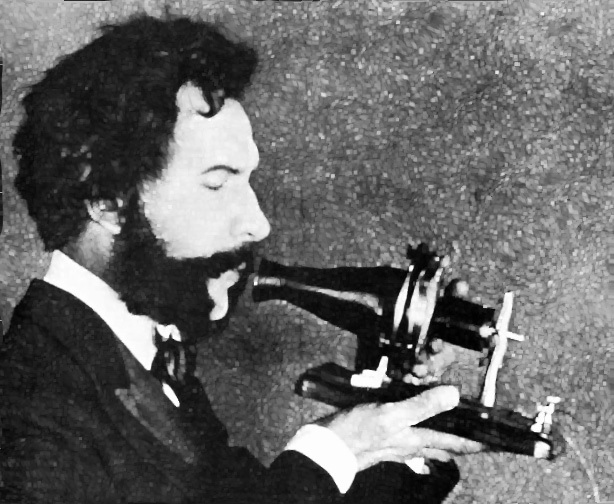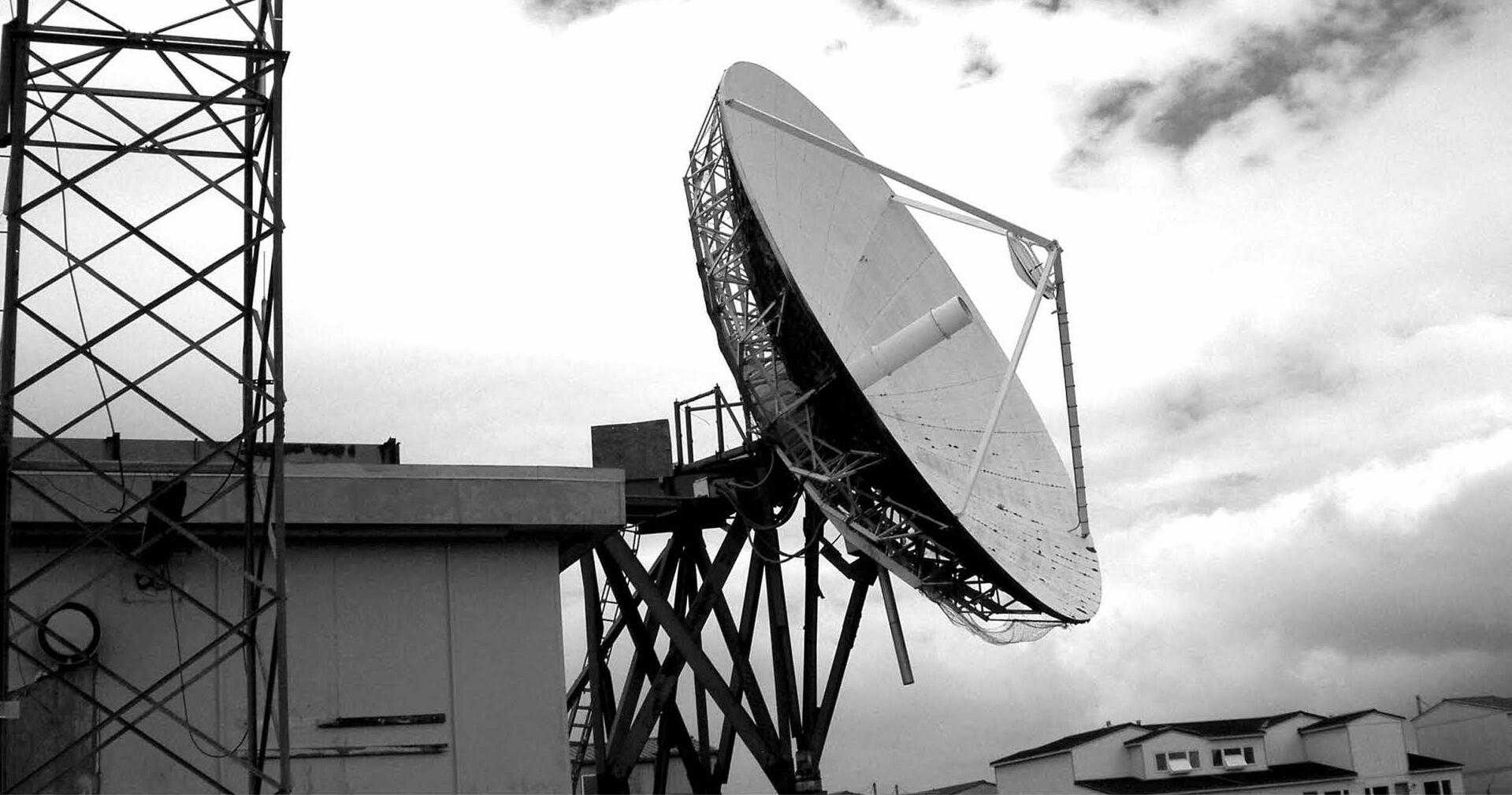Telecom Informer
by The Prophet
Hello, and greetings from the Central Office!
I have good news and bad news. The good news is that I get to work on outside plant again. The bad news is that I'm running fiber to all 79 igloos on the frozen tundra wasteland of Adak Island, Alaska. I'm convinced that my employer sent me here because it was as close a place to Siberia as they could find. In fact, Siberia is barely a stone's throw away from here. And the wind blows so hard (over 120 miles per hour - nobody knows exactly how fast because the wind ripped the anemometer off of the tower) that confused Russian-speaking birds named Ivan are regularly carried here by storms.
Anyway, I'm not sure what the residents of Adak Island plan to do with fiber to the igloo, because there isn't any way of communicating off of the island other than via satellite. Unless, of course, you have a ham license and speak either Russian or Japanese in Morse code! Most of the people here are more interested in fishing boats and beer than the Internet anyway. Whatever the reason, they're going to have a blazingly fast metropolitan area network by the time I get done. Hopefully that's by Sunday, because the next flight after that is the following Thursday. There are only two flights a week, and that's only if neither of them is canceled due to weather!
As you may have guessed, here in rural Alaska, information from the outside world comes almost exclusively via satellite. Adak Island is relatively lucky, all things considered; they get two Alaska Airlines jet flights per week, stocked with mail and freight. Smaller Alaska "bush" communities can receive mail just once a week (or even less frequently if the weather is bad) and FedEx just can't help you even if it absolutely positively has to be there overnight. Even in more populated areas of Alaska, satellite links are still used as a backup during cable outages, which are more frequent than in the Lower 48 due to both the harsh climate and errant fishing trawlers.
Nearly every village in Alaska has a local phone company, typically (though not necessarily) a nonprofit cooperative, which provides local phone service and interconnects with the long distance network. Local telephone service can be very expensive in rural Alaska; for example, here on Adak Island, it's over $100 per month! This is despite heavy subsidies provided through the FCC's Universal Service Fund to the local phone company. The true cost per line can be hundreds of dollars per month; without federal subsidies, basic telephone service would be unaffordable to most rural Alaskans.
Cellular service is available in some parts of rural Alaska, but it makes land lines look cheap. It's usually operated by tiny carriers you've never heard of (such as ASTAC, Bristol Bay Cellular, and Copper Valley Wireless). The service is almost always expensive (averaging $1 per minute plus long distance on Bristol Bay Cellular, for instance). And dust off that bag phone because you're going to need it! Most rural Alaskan cellular service is analog only.
Local phone service works pretty much the same way in Alaska that it does "Outside" (that's what Alaskans call anywhere that isn't Alaska), except that on average it's more expensive and receives more government subsidies. It's also largely run by independent telephone companies (such as ACS, an Alaska-based company and the state's largest provider of both wireline and wireless telephone service). Four-digit local calling still exists in some places, but seven-digit local calling and 11-digit long distance calling are the norm.
Things get a lot more interesting when no local phone service or cellular service is available. In maritime and certain other areas (such as along the remote Denali Highway), residents can often use VHF radiotelephones. These are more expensive than cellular phones but less expensive than satellite phones. Handheld satellite phones are also an option; Globalstar and Iridium can sometimes provide service where you're otherwise out of luck. Contrary to their advertising coverage is by no means assured (particularly in the Brooks Range) but you may get lucky.
Iridium until recently was the only mobile satellite provider that covered Alaska, but Globalstar has begun to compete. They installed a satellite gateway in Wasilla that reportedly provides service in the Aleutians, southcentral, and southeast Alaska. While Iridium service is considerably more expensive than Globalstar (over $1 per minute), it's widely considered by Alaskans to be superior. Iridium provides service farther north than Globalstar does and is the only handheld satellite provider to offer service on the Arctic slope.
Long distance is quite a bit different than in the Lower 48. Competition isn't as fierce, prices are a little higher, and there is a lot more reliance on satellite communications. There are only two facilities-based long distance carriers in Alaska: AT&T Alascom and GCI. Both carriers serve most locations in Alaska, although some remote areas (such as Adak Island) are served only by AT&T Alascom (meaning there are still a few places in the U.S. where you don't have a choice of long distance carriers). While they compete vigorously, the carriers also cooperate by leasing network facilities to one another when it makes business sense.
You can call practically anywhere in Alaska via satellite. Both GCI and AT&T Alascom have their own dedicated communications satellites and an extensive network of ground stations. GCI leases capacity on the Galaxy 9 (127 degrees west longitude) and Galaxy 10R (123 degrees west longitude) satellites for both telephone and cable TV services. These satellites are owned by Hughes Communications.
Alascom uses the Aurora III satellite (146 degrees west longitude), which is solely used for providing telecommunications services to Alaska. Both carriers operate major, high-capacity regional Earth stations (either 9 or 13 meter) which carry both local traffic and traffic fed from smaller (3.6 meter) earth stations in bush villages.
If you've never called anyone via satellite, it's kind of fun. Calls are generally clear but there is about a 600 ms delay. Make someone's day and call the Coast Guard LORAN station on Attu Island: 907-393-9083 (that call bounces off a satellite to Shemya Air Force Base and via a microwave link the final 30 miles out to Attu Island).
In populated areas, fiber optic cables are the primary means of voice and data transport. There are two major fiber optic cable networks: Alaska United Fiber System (AUFS) and Alaska Northstar.
The Alaska United Fiber System is a SONET ring operated by GCI and constructed by Tyco. According to AUFS:
The network consists of three major sections:
- AU-North connecting Fairbanks and communities along the southern pipeline corridor to the network.
- AU-East connecting Anchorage, Juneau, and Seattle with landing sites at Whittier, Lena Point, and Lynnwood, Washington.
- AU-West connecting Anchorage to Seattle with landing points in Seward and Warrenton, Oregon.
The system utilizes optical amplification allowing flexible capacity expansion through the life of the system. The submarine portions were installed with state-of-the-art burial and laying technique by industry leaders. The cable is buried from the cable landing stations to a water depth of 4,900 feet where possible to avoid external aggressions.
The first segment of the AUFS network to be constructed was AU-West, which has operated since 1999. AU-East, which increased capacity five-fold, has operated since 2004. AU-North combines the AU-West and AU-East fibers in the same cable for the run from Valdez to Fairbanks. The current capacity is a combined 750 Gbps between both halves of the ring, which is sufficient to meet current needs.
Additionally, the cable is designed to be upgraded to higher speeds simply by swapping out the DWDM gear installed at the shoreside cable landing. No changes to the 58 submarine optical repeaters currently installed throughout the network will be necessary.
The Alaska Northstar cable is operated by WCI Cable and has been in service since 1999. It replaced the Alaska spur of the former North Pacific Cable and runs on a non-redundant route.
The route traverses from Seattle through Portland to Nedonna Beach, Oregon. From there, it proceeds north and branches to Juneau and Whittier. From Whittier, the cable again branches to Valdez and Anchorage, running north through Fairbanks to Eielson AFB. The WCI Cable NOC can be reached at 503-466-8512.
Cable breaks happen occasionally on the fiber optic networks, are usually caused by commercial fishermen using trawlers, and cost an average of $1,000,000 to fix. Voice calls can still be carried via satellite if a fiber optic cable is out of service, but there is insufficient satellite capacity to handle urban volumes of data traffic.
To mitigate this issue, AUFS has created redundant routes on their network. That's good enough for GCI, which uses AUFS exclusively.
However, AT&T Alascom hedges their bets and purchases capacity on both the AUFS and Alaska Northstar cables.
In addition to cable and satellite, Alaskans using AT&T Alascom can talk via microwave relay. Microwave provides long distance service without satellite latency, which gives AT&T Alascom a competitive edge over GCI in a few communities where GCI provides only satellite service.
The AT&T Alascom microwave network operates throughout Alaska, and largely duplicates existing fiber routes.
However, there are still numerous towns (many of them along the Alaska Highway) that lack fiber connectivity. On the AT&T Alascom network, one could theoretically relay a call from Prudhoe Bay to Ketchikan via the NorthwesTel microwave network in the Yukon Territory.
AT&T Alascom isn't the only user of microwave; the technology is also sometimes used by local exchange carriers for backhaul between bush communities (often Alaska Native villages) and the nearest satellite ground station.
Finally, in a select few lucky communities, there's fiber to the home.
Alaskans love technology and governments are eager to adopt it. And so it is that thanks to a government grant, from your igloo on Adak Island you'll soon have less than one millisecond connectivity at GigE speeds to a 256 kbps, 600 ms lagged, satellite link that is shared with the other 78 island residents.
I'm still scratching my head over that one, but Senator Ted Stevens probably plans to order up a series of tubes to speed things up once I'm gone. And as long as the plane comes on Sunday, I'll be content to cash my paycheck and go back to my evenings of more interesting "service monitoring" than fishing, caribou, Boeing, and SBX radar!


